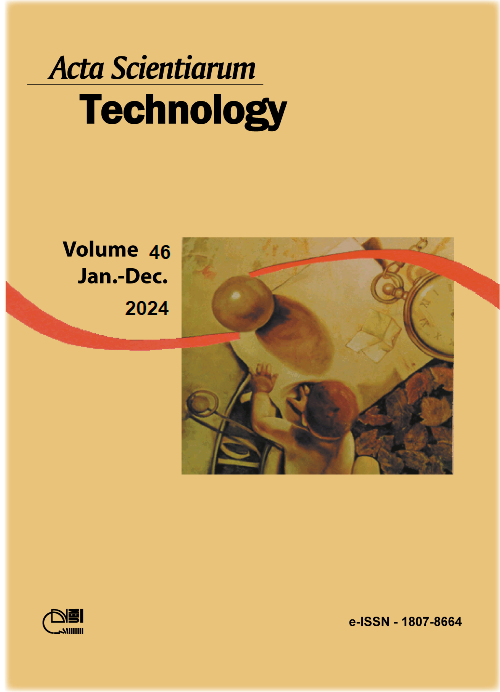Energy efficiency of commercial offices by luminous retrofit
DOI:
https://doi.org/10.4025/actascitechnol.v45i1.58647Palavras-chave:
Luminous performance; natural lighting; artificial lighting; benchmarking; computational simulation.Resumo
Lighting is one of the systems that mostly consume electricity in commercial buildings. Therefore, improving its efficiency has the potential to reduce electricity consumption and emission of polluting gases. The objective of the present study was to assess an office lighting system retrofit of an existing building from the 1990s, verify the light levels in relation to standards of the Brazilian requirements, and to explore new systems with potential for luminous and energy improvement. The analyzes were carried out through computer simulations using the DIALux evo software, which allows the evaluation of artificial and natural illuminations simultaneously. The results indicated that the existing lighting system does not meet the average illuminance standard value for office environment. From simulations with new arrangements and types of luminaires and lamps, two more efficient lighting systems were designed. The first presented savings of 15.5% in lighting energy when replacing T12 fluorescent lamps with LED luminaires. The second system considered the use of natural light and was complemented by artificial lighting with the aid of a dimming system linked to the availability of daylight, and presented up to 67% less electric energy consumption when compared to the existing lighting system in the environments. Therefore, it was possible to propose actions to the existing lighting system retrofit and, thus, offer better visual comfort to users and at the same time save energy.
Downloads
Downloads
Publicado
Como Citar
Edição
Seção
Licença
DECLARAÇíO DE ORIGINALIDADE E DIREITOS AUTORAIS
Declaro que o presente artigo é original, não tendo sido submetido í publicação em qualquer outro periódico nacional ou internacional, quer seja em parte ou em sua totalidade.
Os direitos autorais pertencem exclusivamente aos autores. Os direitos de licenciamento utilizados pelo periódico é a licença Creative Commons Attribution 4.0 (CC BY 4.0): são permitidos o compartilhamento (cópia e distribuição do material em qualqer meio ou formato) e adaptação (remix, transformação e criação de material a partir do conteúdo assim licenciado para quaisquer fins, inclusive comerciais.
Recomenda-se a leitura desse link para maiores informações sobre o tema: fornecimento de créditos e referências de forma correta, entre outros detalhes cruciais para uso adequado do material licenciado.















